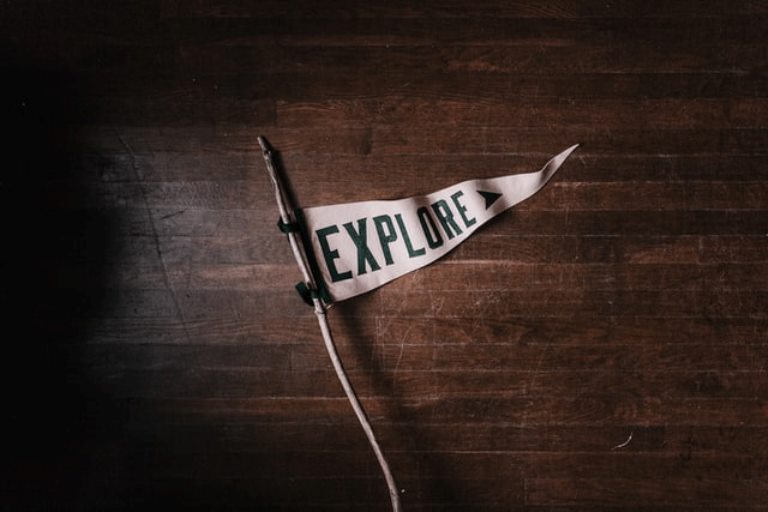The pursuit of new information is something we all tend to engage in when things we’re interested in are the focus. This is why it can be so tempting to waste precious time going through a bunch of articles about the latest tech advances, culinary delights, etc. Satisfying your curiosity releases the happy hormone dopamine in the brain, so it’s no wonder that humans so readily lose track of time when to follow their curiosity.
Of course, this can turn rather problematic if you tend to neglect your responsibilities and will also result in a productivity and motivation drop to tune out things that make you happy. But if you understand your curiosity type, you can leverage it to your advantage as well.
The Feel-Good Chemicals and Curiosity
The true power of dopamine or feel-good chemicals that the brain releases is not just tied to getting what we want. Namely, the biggest release of the feel-good chemicals happens just before a certain goal is reached, thus providing an amazing boost of motivation and productive power to encourage us to take action.

For different people, the brain stimuli of curiosity differ as well. In that sense, we can talk about four curiosity types and five curiosity dimensions, according to psychologist Todd Kashdan.
The Five Curiosity Dimensions
1. Joyous Exploration
It’s rather simple to understand this particular dimension of curiosity. It essentially involves the natural need to learn new things and concepts as well as engage in new interests and hobbies.
2. Deprivation Sensitivity
When it comes to this particular dimension of curiosity, the stimuli are related to problem-solving. A person simply cannot stay still until they manage to complete all of the pieces of the puzzle (both real and metaphorical ones). In this case, it’s the anxiousness and eustress that encourage the person to take one action after another.

3. Stress Tolerance
In order to understand yourself better, it’s important to understand the concept of the Stress Tolerance curiosity dimension. Think carefully about whether you tend to thrive in the face of the unknown and the uncertainty. While some people have an almost debilitating fear of what comes next and what the future holds, others simply light up when they consider the potential of taking risks.
4. Social Curiosity
To put it simply, this particular dimension of curiosity focuses on the person’s affinity for other people and everything that this brings. Social Curiosity can be divided into two categories, namely overt social curiosity, which deals with the general interest in human behavior, and covert social curiosity, which deals with social instances such as gossiping or snooping.

5. Thrill Seeking
Thrill Seeking curiosity dimension perfectly sums up all the thrill-seekers out there who have a strong thirst for adventure.
The Four Curiosity Types
The previously mentioned dimensions of curiosity have allowed for the creation of four distinct curiosity types as well.
Type 1: The Fascinated
Someone who’s The Fascinated curiosity type finds pleasure and satisfaction in all five of the mentioned curiosity dimensions. If you find yourself to have a rather broad interest spectrum and don’t hesitate to try many different things, there’s a high chance you’re type 1.
Type 2: The Problem Solver
As the name suggests, someone who’s a Problem Solver tends to get the biggest satisfaction within the Deprivation Sensitivity dimension of curiosity. They may have interests within other dimensions as well, but the need to reach a goal/solution is considerably a predominant one.

Type 3: The Empathizer
A person who gets a thrill from being a people person and thrives in social situations is considered The Empathizer curiosity type. These people also find moderate satisfaction within the Joyous Exploration and Deprivation Sensitivity dimensions, but not so much from the Stress Tolerance and Thrill Seeking.
Type 4: The Avoider
People who don’t seem to have any particularly notable satisfaction from any of the mentioned curiosity dimensions are generally deemed to be Type 4, also known as The Avoider. They especially dislike the concept of Stress Tolerance.
How to Identify Your Curiosity Type
It’s time to do a fun and short test to determine what your curiosity type is so that you can utilize it for a productivity and motivation boost, a dopamine increase, and overall get more things done during your day.

Use the scoring from 1 to 7 to determine how much the following statements are true for you:
- 1 – not at all
- 2 – barely
- 3 – somewhat
- 4 – neutral
- 5 – a bit
- 6 – mostly
- 7 – completely
Joyous Exploration
- I find challenging situations to be a chance for growth.
- I consciously look for situations that require deep thinking.
- It’s enjoyable for me to learn about completely new and unfamiliar things.
- Finding out something new fascinates and inspires me.
Deprivation Sensitivity
- I often stay awake at night thinking about solutions to difficult problems.
- It’s possible for me to spend hours focused on just one problem until I finally solve it.
- When I can’t figure out the answer, I am frustrated and need to delve into it even more.
- I’m capable of relentless pursuit until I finally solve the problem that I deem important.
Stress Tolerance (Reverse score this dimension)
- If I’m doubtful in any way, I won’t proceed with a new experience.
- The stress of uncertainty is too much for me to handle.
- I don’t feel comfortable with exploring new places.
- I have concentration issues when there’s a chance of an unpredictable situation.
Overt Social Curiosity
- I want to learn as much as possible about other people by asking questions.
- If someone seems happy and excited, I need to find out why.
- During conversations, I go out of my way to learn more interesting things about the person.
- I enjoy learning the reasons behind people’s behavior.
Covert Social Curiosity
- If other people are talking, I have a strong need to learn what they’re talking about.
- I like to listen in on other people’s conversations.
- If there’s a quarrel near me, I have the urge to learn what it is about.
- I go out of my way to find out the personal details of people in my life.
Thrill Seeking
- I simply love to take risks.
- In my free time, I enjoy engaging in scary hobbies and activities.
- I would much rather get into an unplanned adventure than plan it.
- Most of my friends are rather unpredictable.
Once you have your scoring in place, simply calculate it for each dimension and use the answer to find your own curiosity type.
How to Leverage Your Curiosity Type
The Fascinated
If your score suggests you’re Curiosity Type 1, you can easily turn your daily experiences into a productivity boost. The most important thing for The Fascinated is to stick to their schedule and keep themselves organized. That way, they’ll have enough time for work and more than enough time for trying new things and learning more about their interests. And after satisfying their curious nature, they’ll be able to utilize the dopamine release and new knowledge in their productive workday as well.
The Empathizer
In case you honestly feel the most excited and productive when you have a specific goal to reach, you can organize your productive workday around many smaller goals and milestones which will keep your dopamine flow consistent. Just make sure not to go overboard with setting some overly difficult goals with not enough smaller ones, as this can make you focus on one single thing too much. Instead, apply the S.M.A.R.T. goal setting concept.

The Problem Solver
If you’re a people person who gets the biggest curiosity satisfaction from socializing, simply make sure to leave enough room in your schedule to meet up with others and enjoy their company after work. The dopamine release you get from socializing is bound to be strong enough to help you experience a productivity boost the next day. Of course, don’t hesitate to talk to your colleagues during the breaks at work or get in touch with your friends online if you’re working from home.
The Avoider
Those of you who fall under The Avoider Curiosity Type may find it a bit difficult to use curiosity as a productivity boost. However, nothing is impossible. You’re bound to have some type of interest that makes you all happy and excited every time you engage in it. That said, make sure to nurture this interest during your free time so that you can leverage the dopamine for your productivity later on.
If you’re looking to further utilize your own unique personality and character to your advantage, consider exploring the power of the unconscious mind.
